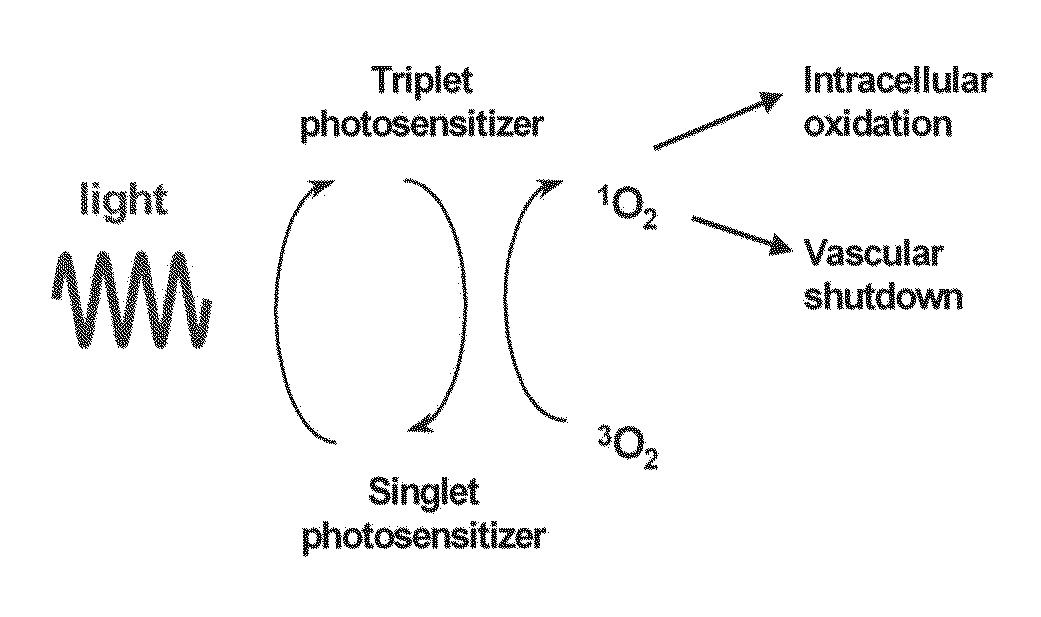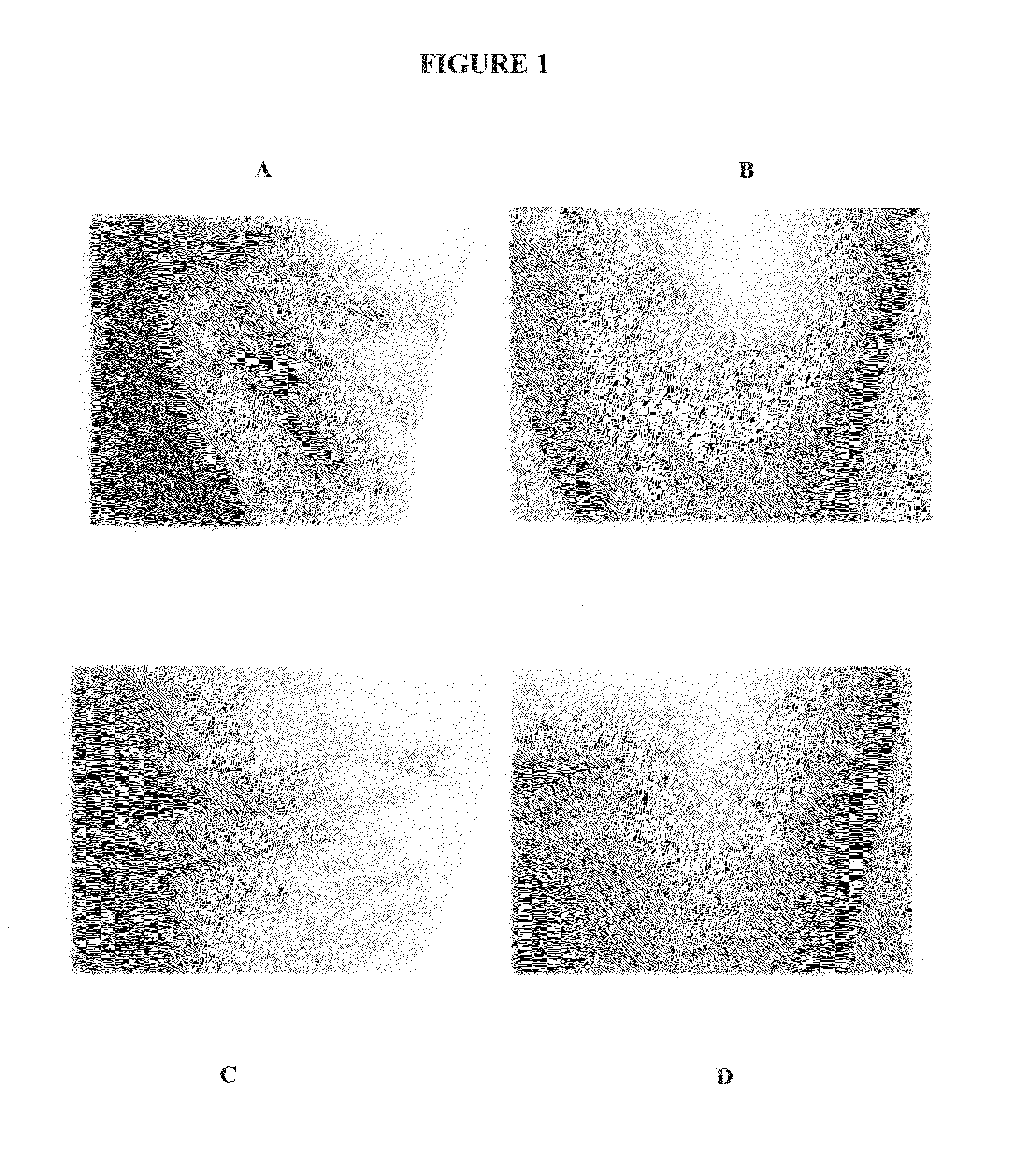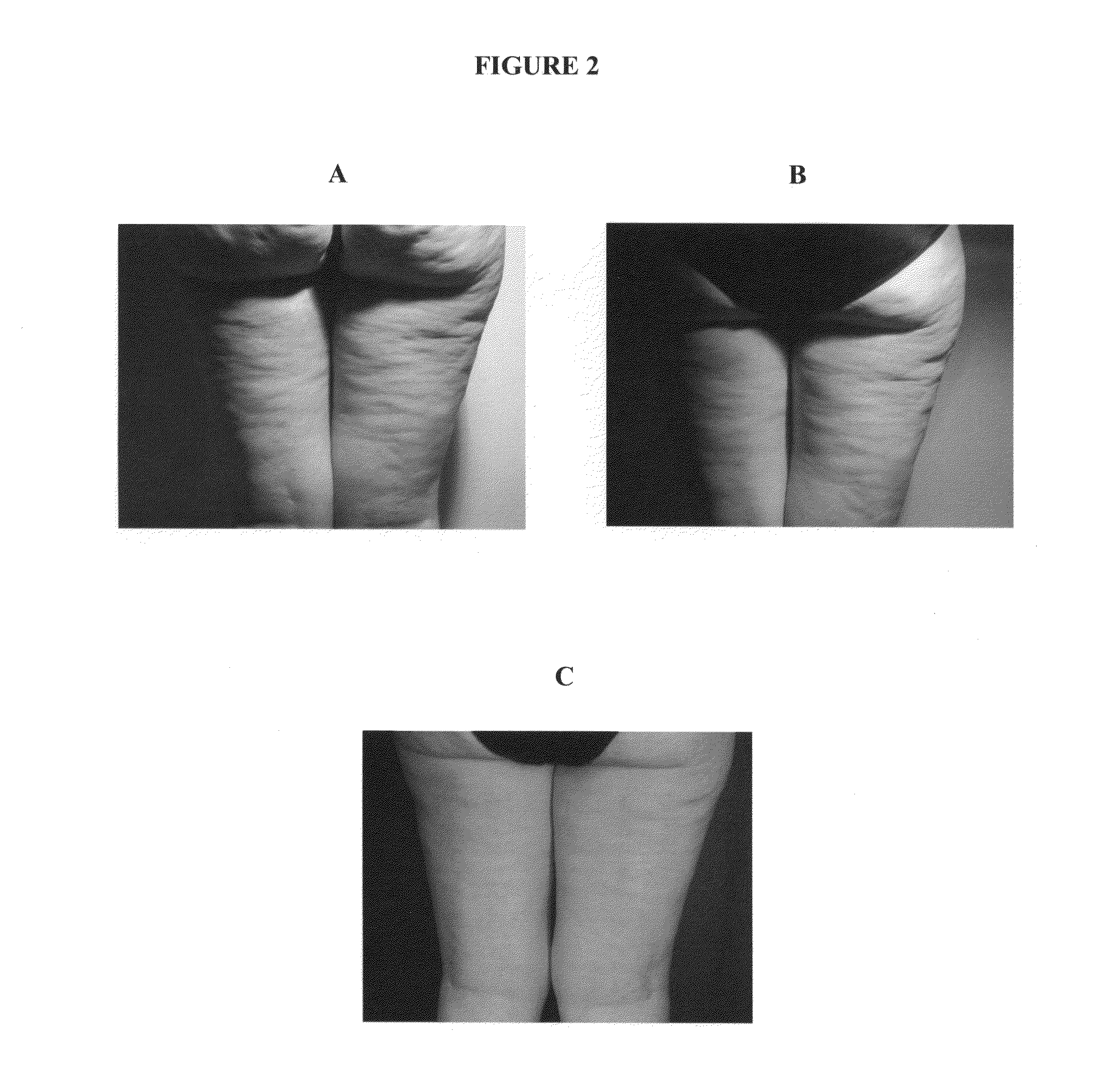Pdt treatment method for cellulites and cosmetic use
- Summary
- Abstract
- Description
- Claims
- Application Information
AI Technical Summary
Benefits of technology
Problems solved by technology
Method used
Image
Examples
example 1
General Procedure
A patient having cellulite is treated with temoporfin in several sessions. The variables in this treatment program are as follows:
1. Determination of the grade of cellulite in the patient;
2. Determination of the dose and concentration of temoporfin, confirmation that it produces an improvement on the cellulite, and ensuring that it is possible to apply it directly by mesotherapy without the need of systemic introduction;
3. Determination of the potency of temoporfin based on the time of application to the time of laser application; and
4. Determination as to accompanying treatments.
The dilutions used for treatment are presented in Table 1.
TABLE 1PHYSIO-PURELOGICALCONCENTRATIONPRODUCTTEMOPORFINSERUMmg / ml5 gr.7.5 mg 5 ml1.5 mg / ml5 gr.7.5 mg25 ml0.3 mg / ml5 gr.7.5 mg37.5 ml 0.2 mg / ml5 gr7.5 mg50 ml0.15 mg / ml 5 gr7.5 mg75 ml0.1 mg / ml
To treat cellulite, a concentration of 0.005 mg / ml is applied directly by mesotherapy. This concentration results from the study of optimal c...
example 2
Special Treatments
Temoporfin is a photosensitizer having affinity for phospholipids and cell membranes, but is not soluble in triglycerides. The appearance of cellulite in the more severe stages is a bubbling affect having depressed areas and hill like areas. These areas may require special treatment as follows:
For Filling Depressed Areas:
1. Prepare diluted temoporfin (formulated in a liposome) at 0.3 mg per ml;
2. Wash and mix five parts fat from liposuction with one part diluted temoporfin;
3. Inject the mixture in the depressed area with an 18 gauge needle;
4. Wait 30 minutes after injection;
5. Apply PDT treatment; and
6. Wash the treated area.
For Elevated Zones or Hills
1. Prepare temoporfin (formulated in a liposome) to 0.3 mg per ml;
2. Inject the diluted temoporfin into the area to be treated;
3. Wait 30 minutes; and
4. Apply PDT treatment.
In summary the general procedure is 1. analysis and marking of areas to be treated; 2. adding photosensitizer solution to areas to be treated, aft...
example 3
Steps for Patient Assessment and Treatment for Localized Cellulite
1. Diagnostic: Clinical evaluation with anthropometric measurements, weight and pictures complemented by the use of thermograph charts to confirm the clinical assessment of the cellulite stage (I, II, III or IV).
2. Treatment:
a. Temoporfin (formulated in a liposome) mesotherapy deep injection:i. 2 cc / 100 cm2 of area to be treated with one injection of 0.05 mg / ml temoporfin dilution (Stage IV); andii. 2 cc / 100 cm2 of area to be treated with one injection of 0.025 mg / ml temoporfin dilution (Stage II and III).
For example, on a buttock area of treatment, 6 or 8 cc of solution is used with 0.05 or 0.025 mg / ml temoporfin depending on the stage of cellulite. For serious conditions, liposuction is used to obtain some of the patient's own fat, which is cleaned and then injected into the depressed areas;
b. Lymph-drainage or soft massage to distribute the drug within the area of treatment;
c. Wait 30 minutes;
d. Laser illumination:...
PUM
| Property | Measurement | Unit |
|---|---|---|
| Fraction | aaaaa | aaaaa |
| Fraction | aaaaa | aaaaa |
| Percent by volume | aaaaa | aaaaa |
Abstract
Description
Claims
Application Information
 Login to View More
Login to View More - R&D
- Intellectual Property
- Life Sciences
- Materials
- Tech Scout
- Unparalleled Data Quality
- Higher Quality Content
- 60% Fewer Hallucinations
Browse by: Latest US Patents, China's latest patents, Technical Efficacy Thesaurus, Application Domain, Technology Topic, Popular Technical Reports.
© 2025 PatSnap. All rights reserved.Legal|Privacy policy|Modern Slavery Act Transparency Statement|Sitemap|About US| Contact US: help@patsnap.com



